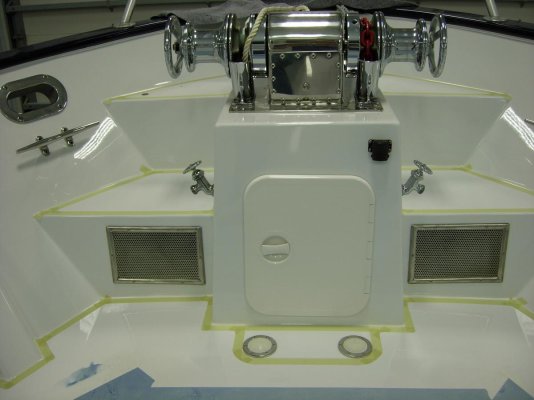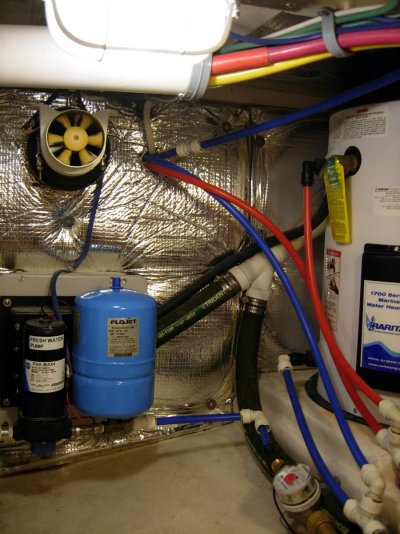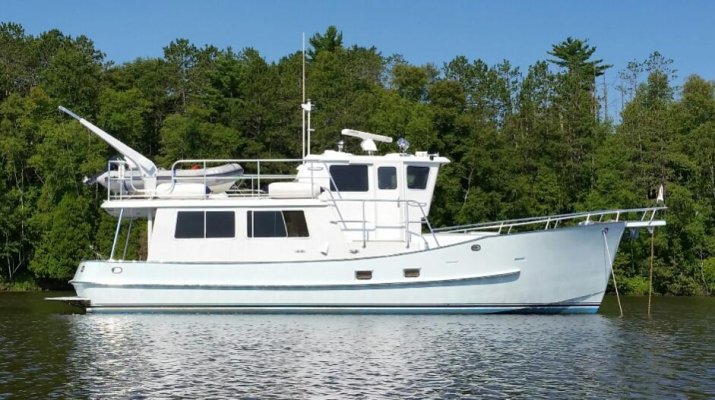firehoser75
Guru
- Joined
- Feb 18, 2018
- Messages
- 1,705
- Location
- Canada
- Vessel Name
- former owner of "Pilitak"
- Vessel Make
- Nordic Tug 37
I am looking for advice and preferably experiences from those who have installed fans/blowers in the engine room to reduce ER temperatures.
Some background. I have read that engine room temperatures should never exceed 115 degrees F (mine have not) and that optimally the differential between the outside temperature and the ER temperature should not exceed 30 degrees F. So for example, if the outside temp is 68 degrees F and the ER temp is 105 degrees F, in theory your ER is too warm??
Also, having a cooler ER would benefit any installed items located there, for example battery chargers, inverters, batteries, solar controller, and even the engine alternator, etc.
My engine room temperature often exceeds the 30 degree differential and I am hoping to find a way to "cool" the ER without having to conduct major surgery like adding more holes, etc. Not going there!
Not going there!
I am thinking about adding a blower (maybe even 2), but don't want to go to the expense and trouble if it will not be effective. I am hoping for a reduction in temp of about 10 degrees F.
If I add blowers, my goal would be to exhaust at least as much air as I may increase intake (don't want to pressurize the ER possibly forcing gases and heat into the boat).
Has anyone had experience with this with good results? If so, what brand/model of blower and where in the ER did you locate it (them).
I have not experienced any operating problems associated with this higher than optimal temp difference, but I can understand the potential benefits (overall) of having a cooler ER.
Thanks,
Tom
Some background. I have read that engine room temperatures should never exceed 115 degrees F (mine have not) and that optimally the differential between the outside temperature and the ER temperature should not exceed 30 degrees F. So for example, if the outside temp is 68 degrees F and the ER temp is 105 degrees F, in theory your ER is too warm??
Also, having a cooler ER would benefit any installed items located there, for example battery chargers, inverters, batteries, solar controller, and even the engine alternator, etc.
My engine room temperature often exceeds the 30 degree differential and I am hoping to find a way to "cool" the ER without having to conduct major surgery like adding more holes, etc.
I am thinking about adding a blower (maybe even 2), but don't want to go to the expense and trouble if it will not be effective. I am hoping for a reduction in temp of about 10 degrees F.
If I add blowers, my goal would be to exhaust at least as much air as I may increase intake (don't want to pressurize the ER possibly forcing gases and heat into the boat).
Has anyone had experience with this with good results? If so, what brand/model of blower and where in the ER did you locate it (them).
I have not experienced any operating problems associated with this higher than optimal temp difference, but I can understand the potential benefits (overall) of having a cooler ER.
Thanks,
Tom

 ).
). 

 I run the blower whenever the engine or generator is running. The blower typically lasts 1,500 hours. I think they're about $30 or $40 dollars which I consider a small price to pay for a cool engine room.
I run the blower whenever the engine or generator is running. The blower typically lasts 1,500 hours. I think they're about $30 or $40 dollars which I consider a small price to pay for a cool engine room. 